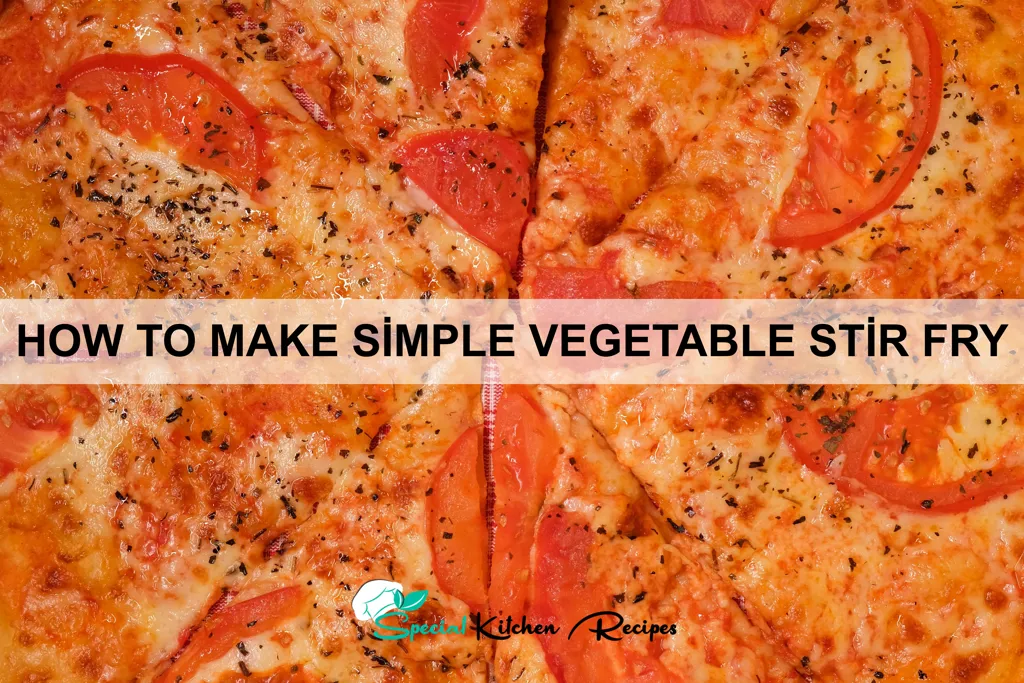Stir-frying, a cornerstone of countless cuisines worldwide, boasts a history as rich and varied as its ingredients. While pinpointing a single origin is difficult, its roots are firmly planted in China, where rapid cooking techniques were developed centuries ago, likely born out of necessity for quick and efficient meal preparation. Early methods involved using woks, specialized pans ideal for high-heat cooking, allowing for quick searing and even cooking of ingredients. The exact timeline is debated, but evidence suggests stir-frying techniques, in some form, were prevalent in Chinese cooking by the Song Dynasty (960-1279 AD).
From its humble beginnings in China, stir-frying spread globally, becoming a culinary cornerstone in many Asian countries, each developing its own unique variations and flavor profiles. Southeast Asian nations, for example, often incorporate vibrant spices and fragrant herbs like lemongrass and galangal, while Japanese stir-fries might prioritize delicate flavors and precise cuts of vegetables. The dish’s adaptability is a key factor in its global success. According to a 2021 survey by the National Restaurant Association, stir-fry ranked among the top 5 most popular takeout options in the United States, highlighting its enduring appeal across cultures.
Beyond its culinary versatility, stir-frying holds significant cultural importance. It’s often associated with communal meals and family gatherings, embodying a sense of togetherness and shared experience. The rapid preparation method allows for spontaneity and improvisation, reflecting the dynamic nature of many cultures. Furthermore, the emphasis on fresh, seasonal produce makes stir-frying a sustainable and healthy cooking method. A single serving of vegetable stir-fry can provide a significant portion of your daily recommended intake of vitamins and minerals, making it a nutritious and delicious choice. This recipe offers a simple, adaptable approach to this globally beloved dish, allowing you to explore the endless possibilities of this iconic cooking technique.
Ingredients and Measurements
This recipe provides a flexible framework for your vegetable stir-fry. Feel free to adjust the quantities based on your preferences and the number of servings you require. The key is to maintain a balance of textures and flavors. We’ll be using metric measurements for consistency, but conversions are readily available online.
Vegetables: The beauty of a stir-fry lies in its versatility. Choose your favorite vegetables, focusing on a mix of colors and textures. Here’s a suggested combination for a vibrant and flavorful stir-fry:
- 200g Broccoli florets: Choose firm, tightly clustered florets for optimal texture.
- 150g Bell peppers (various colors): A mix of red, yellow, and orange peppers adds visual appeal and diverse sweetness.
- 100g Carrots, peeled and julienned: Julienned carrots cook faster and offer a pleasant crunch.
- 100g Snow peas or Sugar snap peas: These add a delicate sweetness and vibrant green color.
- 1 small Onion, thinly sliced: Provides a base of savory flavor.
- 2 cloves Garlic, minced: Essential for aromatic depth. Use fresh garlic whenever possible.
- 1 inch piece of Ginger, grated: Adds a spicy warmth that complements the other vegetables.
Protein (Optional): You can easily add protein to this stir-fry. Consider:
- 150g Chicken breast, cut into bite-sized pieces
- 150g Tofu, pressed and cubed
- 150g Shrimp, peeled and deveined
Sauce: The sauce is crucial for binding the flavors together. This recipe uses a simple yet delicious soy-based sauce:
- 4 tablespoons Soy sauce (or Tamari for gluten-free): Adjust to your preferred saltiness.
- 2 tablespoons Rice vinegar: Adds a touch of acidity to balance the richness.
- 1 tablespoon Sesame oil: Provides a nutty aroma and richness.
- 1 tablespoon Honey or maple syrup (optional): Adds a touch of sweetness.
- 1 teaspoon Cornstarch (optional): For a thicker sauce. Mix the cornstarch with a little cold water before adding it to the sauce.
Other:
- 2 tablespoons Vegetable oil: High-heat cooking oil like canola or peanut oil is recommended.
Important Note: These measurements are suggestions. Feel free to experiment with different vegetables and adjust the quantities to your liking. The key is to have a good balance of flavors and textures.
Preparation Phase (includes washing, chopping vegetables appropriately)
The success of any stir-fry hinges on proper preparation. This phase, while seemingly simple, is crucial for achieving the desired texture and flavor in your final dish. We’ll be making a stir-fry with approximately 2 servings, so adjust quantities as needed for larger groups.
Begin by thoroughly washing all your vegetables. Use cold running water to rinse away any dirt, pesticides, or debris. For leafy greens like spinach or bok choy, consider soaking them in a bowl of cold water for a few minutes to help remove any hidden dirt particles. Then, thoroughly rinse again under running water.
Next, comes the crucial step of chopping. Consistent chopping ensures even cooking. Aim for roughly similar sized pieces for all your vegetables. This will prevent some ingredients from overcooking while others remain undercooked. For this recipe, let’s assume we’re using the following: 1 cup broccoli florets, 1 red bell pepper, 1/2 cup sliced mushrooms, and 1/2 cup sliced carrots.
For the broccoli, cut the florets into bite-sized pieces, approximately 1-inch in size. Avoid making them too small, as they might overcook and become mushy. Similarly, cut the red bell pepper into thin strips, about 1/4-inch wide. This allows for quicker cooking and better incorporation of flavors. The mushrooms and carrots can be sliced into similarly sized pieces – about 1/4 inch thick.
Proper knife skills are paramount. Use a sharp knife for efficient and safe chopping. A dull knife requires more force and increases the risk of accidents. If you’re not comfortable with a chef’s knife, a smaller paring knife can also work well for smaller vegetables. Remember to keep your fingers tucked in while chopping to prevent injury.
Once all your vegetables are chopped, it’s a good idea to organize them. Having your prepped ingredients ready in separate bowls will streamline the cooking process and prevent any delays once you start stir-frying. This is especially helpful when dealing with multiple vegetables with varying cooking times. Mise en place, or everything in its place, is a crucial principle in efficient cooking.
Finally, before you begin cooking, consider prepping any sauces or seasonings you’ll be using. This could include measuring out soy sauce, ginger, garlic, or any other spices you’ll need. Having these ready to go will further expedite the cooking process and ensure a smoother, more efficient stir-fry experience.
Cooking Techniques (stir-frying specifics, oil selection, order of adding ingredients)
Stir-frying is all about speed and high heat. The goal is to quickly cook vegetables while retaining their vibrant color, crisp texture, and nutritional value. This requires a well-prepped mise en place and a hot wok or large skillet.
Oil Selection: The right oil is crucial. You need a high smoke point oil that can withstand the intense heat of stir-frying without burning. Peanut oil and vegetable oil (with a high smoke point) are excellent choices. Use approximately 1-2 tablespoons of oil for a typical stir-fry serving two to three people. Too much oil will make the dish greasy, while too little will lead to sticking.
Wok Hei: While achieving true wok hei (the smoky aroma and flavor characteristic of stir-fries) requires a specialized wok and high heat, you can still aim for a similar effect in a large skillet. A well-seasoned wok or skillet helps prevent sticking and contributes to better browning.
Order of Adding Ingredients: The order in which you add ingredients is key to achieving perfectly cooked vegetables. Always start with the ingredients that take the longest to cook. This usually means heartier vegetables like carrots, broccoli stems, and potatoes. Add these to the hot oil and stir-fry for 2-3 minutes until they begin to soften.
Next, add ingredients that require a moderate cooking time, such as bell peppers, mushrooms, and zucchini. Stir-fry for another 1-2 minutes. Finally, add the quickest-cooking ingredients like leafy greens (spinach, bok choy), snow peas, and bean sprouts. These only need 30-60 seconds to wilt. Overcooking will make them soggy.
Sauce: Add your sauce during the last minute of cooking. This allows the flavors to meld without becoming overly thick or sticky. A simple stir-fry sauce might include 2 tablespoons of soy sauce, 1 tablespoon of rice vinegar, 1 teaspoon of sesame oil, and ½ teaspoon of cornstarch mixed with 1 tablespoon of water (to thicken the sauce). Adjust to your taste preferences.
Important Note: Don’t overcrowd the pan. If you have a large amount of vegetables, stir-fry them in batches to ensure even cooking and prevent steaming. Keep the heat high throughout the entire process to maintain that characteristic stir-fry crispness.
Serving Suggestions
Your delicious and healthy vegetable stir-fry is ready! Now, let’s explore some wonderful ways to serve it and elevate your culinary experience. The beauty of a stir-fry lies in its versatility; it can be a light lunch, a hearty side dish, or the star of a complete dinner.
Serving it as a main course: For a satisfying and complete meal, serve 1.5 to 2 cups of stir-fry per person. Consider adding a protein source to make it more substantial. 4-6 ounces of cooked chicken, tofu (about 1/2 block, cubed), shrimp (about 1/2 cup cooked), or lean beef (about 4 ounces) would complement the vegetables perfectly. Remember to stir-fry the protein separately before adding it to your vegetables during the last few minutes of cooking to prevent overcooking.
Serving it as a side dish: A generous 1 cup serving of stir-fry makes an excellent accompaniment to grilled meats, roasted fish, or even a simple bowl of rice. Its vibrant colors and fresh flavors will beautifully contrast with richer main courses.
Garnishes and additions: Enhance the presentation and flavor profile of your stir-fry with a sprinkle of fresh herbs like cilantro or basil (about 1 tablespoon chopped). A squeeze of lime juice (about 1/2 lime) right before serving adds a delightful zing. Toasted sesame seeds (about 1 teaspoon) provide a nutty crunch and visual appeal. Consider a drizzle of your favorite stir-fry sauce (about 1-2 tablespoons) for an extra layer of flavor, but remember that your stir-fry likely already has sufficient seasoning.
Accompaniments: Serve your stir-fry with fluffy white rice (about 1/2 cup cooked rice per serving), brown rice, quinoa, or even noodles for a more complete meal. These provide a neutral base that complements the vibrant vegetables. If you prefer a lower-carb option, consider serving it with cauliflower rice.
Leftovers: Store leftover stir-fry in an airtight container in the refrigerator for up to 3 days. Reheat gently in a pan or microwave until heated through. The flavors often deepen upon reheating, making it even more delicious the next day. Avoid over-reheating, as this can make the vegetables mushy.
Creative serving ideas: Try serving your stir-fry in lettuce cups for a low-carb, refreshing option. You could also use it as a filling for omelets, wraps, or even tacos for a fun twist on traditional recipes. The possibilities are endless!
Tips and Tricks
Mastering the art of a simple yet delicious vegetable stir-fry hinges on a few key techniques. Follow these tips and tricks to elevate your culinary skills and enjoy perfectly cooked, flavorful stir-fries every time.
Preventing Sticking: The bane of many a stir-fry is sticking vegetables. To combat this, ensure your wok or large skillet is adequately hot before adding any oil. Use about 1-2 tablespoons of high-smoke-point oil, such as canola, peanut, or vegetable oil, for a 12-inch pan. Don’t overcrowd the pan; work in batches if necessary to maintain a high temperature and prevent steaming. This ensures even browning and prevents vegetables from releasing excess moisture and sticking.
Maximizing Flavor: Flavor is key! Begin by prepping your vegetables properly. Consistent sizing is crucial for even cooking. Aim for bite-sized pieces, roughly ½ inch to ¾ inch in size. Don’t shy away from seasoning; season generously at each stage. A pinch of salt and freshly cracked black pepper should be added before cooking the vegetables. Consider adding a small amount (1-2 teaspoons) of your preferred stir-fry sauce towards the beginning of cooking to help coat and flavor the vegetables. A final flourish of sauce at the end will provide a glossy finish and enhance the overall taste.
Choosing the Right Vegetables: Select firm, vibrant vegetables that are in season for the best flavor and texture. Harder vegetables like carrots, broccoli, and bell peppers should be added to the wok first, as they require longer cooking times. Delicate vegetables like spinach, bean sprouts, and snow peas are best added towards the end to prevent overcooking. Consider a balance of textures and colors for visual appeal.
Mastering the Wok Hei: While achieving true wok hei (the smoky flavor imparted by a very hot wok) requires practice and a well-seasoned wok, you can still mimic its effect. Maintain a high heat throughout the cooking process. The quick, high-heat cooking helps to caramelize the vegetables, creating depth of flavor. If you don’t have a wok, a large, heavy-bottomed skillet will work well.
Don’t Overcook: The goal is to stir-fry, not stew. Vegetables should be tender-crisp, not mushy. Overcooked vegetables lose their vibrant color and nutritional value. Once the vegetables are cooked through, remove them from the heat immediately to prevent further cooking.
Garnish and Serve: A sprinkle of chopped green onions or sesame seeds adds a visually appealing and flavorful garnish. Serve your stir-fry immediately over rice or noodles for a complete and satisfying meal. Enjoy the fruits of your labor!
Nutritional Information (Optional)
The nutritional content of your vegetable stir-fry will vary significantly depending on the specific vegetables you choose and the amount of oil and sauce used. The following provides an estimate for a stir-fry containing approximately 2 cups of mixed vegetables (broccoli, carrots, bell peppers, snap peas), 2 tablespoons of soy sauce, 1 tablespoon of sesame oil, and 1 clove of garlic. This recipe serves one.
Estimated Calories: Approximately 250-300 calories. This is a rough estimate and can fluctuate greatly based on the vegetables used. For instance, adding more calorie-dense vegetables like corn or potatoes will increase the total calorie count. Using a higher-calorie oil, like coconut oil, will also impact the final calorie count.
Estimated Macronutrients (per serving):
- Protein: 5-7 grams. This comes primarily from the soy sauce and any added protein sources like tofu or edamame. Adding protein will increase this value significantly.
- Carbohydrates: 30-40 grams. The carbohydrate content largely depends on the starchy vegetables included. Carrots and corn contribute more carbohydrates than broccoli or peppers.
- Fat: 10-15 grams. The fat content is influenced by the type and quantity of oil used. Using less oil will reduce the fat content. Adding nuts or seeds will increase the fat content and also add beneficial nutrients.
- Fiber: 5-8 grams. The high fiber content is a significant benefit of vegetable stir-fries, contributing to digestive health and satiety. A wide variety of vegetables will maximize fiber intake.
Important Considerations:
- Sodium Content: Soy sauce is a significant source of sodium. Be mindful of your sodium intake, especially if you have health concerns. Consider using low-sodium soy sauce or a combination of soy sauce and other seasonings to reduce the sodium content. Reducing the amount of soy sauce used is a key step in managing sodium intake.
- Oil Type: Choose healthy oils like olive oil, avocado oil, or sesame oil. Limit the amount of oil used to keep the calorie and fat content low.
- Vegetable Variety: Include a diverse range of vegetables to maximize the nutritional benefits. Different vegetables offer different vitamins and minerals.
- Portion Control: The calorie and macronutrient counts are estimates for a single serving. Adjust accordingly based on your individual needs and dietary goals.
For a more precise nutritional analysis, use a nutrition tracking app or website and input the specific ingredients and their quantities. This will provide a more personalized and accurate nutritional breakdown of your stir-fry.
Recommendations
For a truly delicious and satisfying vegetable stir-fry, consider adding a protein source such as tofu, chicken, shrimp, or beef. Marinate your protein before adding it to the stir-fry to enhance the flavor. Experiment with different types of vegetables to create unique flavor combinations. Don’t be afraid to add a splash of your favorite hot sauce or a squeeze of lime juice at the end for an extra kick.
Serving suggestions are plentiful! Serve your vegetable stir-fry over rice, quinoa, or noodles for a complete and hearty meal. It also pairs wonderfully with naan bread for scooping up the delicious sauce. For a lighter option, serve it alongside a simple salad with a light vinaigrette.
Storage is key to maintaining freshness. Allow the stir-fry to cool completely before storing it in an airtight container in the refrigerator. It’s best consumed within 2-3 days for optimal quality and flavor. Reheating is easy – simply warm it gently in a pan or microwave until heated through.
Complementary dishes can elevate your meal. A simple miso soup or a light and refreshing cucumber salad would make excellent accompaniments. Consider adding a side of steamed dumplings or spring rolls for a more substantial meal. The versatility of vegetable stir-fry allows for many creative pairings.
Nutritional Information (per serving, approximate): The nutritional content will vary greatly depending on the specific vegetables and ingredients used. However, a typical serving of vegetable stir-fry can provide approximately 200-300 calories, 5-10 grams of protein, 10-20 grams of carbohydrates, and 5-15 grams of fat, with a good source of vitamins and minerals such as Vitamin A, Vitamin C, and fiber. These values are estimates and should be adjusted based on your specific recipe and ingredient choices. Always consult a nutrition calculator for precise values.





